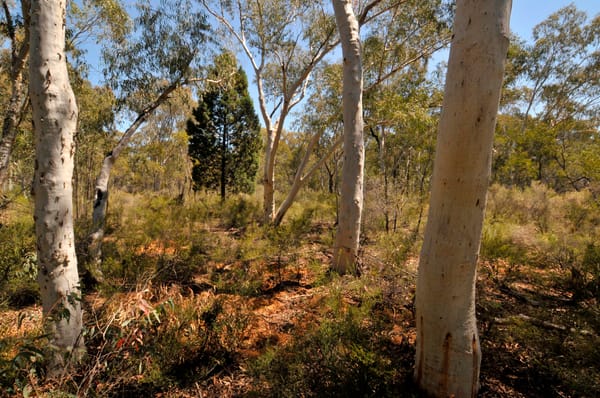What's under the big numbers?

Australian Government yesterday released a comprehensive National Climate Risk Assessment. It is the first time in over 15 years that a detailed review has been undertaken into the likely consequences of climate change for this country, and really the first time ever that it has all been pulled together like this.
There are some things in this that we all need to understand, hence this post.
I'm not going to summarise the risks outlined in the assessment. Suffice to say, all seven of the focus areas will be pushing into "very high" risk or higher by 2050, which is not far away. Instead, there are some threads across the assessment that are important:
- Escalating changes in weather and natural systems that we have witnessed in the last five years or so will further escalate in the years ahead in ways that are difficult for people to imagine and process. This is not a distant prospect, nor is it a "new normal."
- The assessment makes clear that changes in Australia’s climate will not occur gradually or smoothly: "Reaching potential climate and ecological tipping points is very likely to result in abrupt changes."
- The increasing frequency and severity of climate events risk will strain social supports, and the basic services people rely on - transport of basic supplies, communications, energy, health and social services, not to mention water security. As these changes compound and cascade, they "may overwhelm the government’s capacity to respond effectively."
- While every Australian will feel the effects of this, the risk of harm is uneven geographically and existing inequalities will be intensified: risks are far higher in northern Australia; they are higher for Aboriginal and Torres Strait Islander people, people living in poverty, and those living with disability; they are higher in remote and rural areas and for those whose livelihoods are closely tied to the natural environment. They are highest of all for those who come after us.
- The assessment tries to illuminate how interconnected all of this is: as people and systems are affected by events, decisions are made and actions are taken that affect other people and systems; as event unfold simultaneously, trade-offs about where to spend resources will be made; as the natural environment changes, the human communities that rely on it will move and change.
The assessment notes that there are signs of negative social tipping points already starting to emerge in Australia, but also that tipping points and transformational change can go either way.
This is the most important thing for us to understand. While these processes now seems overwhelming and unstoppable, how it unfolds and what we do as it unfolds is up to all of us.
Attention tends to go to the big numbers: millions of homes in the path of coastal inundation, price tags in the hundreds of billions. But as with the IPCC's Sixth Assessment report, the most important things are incalculable. This morning I read the chapter in the risk assessment about "Governance" because governance, like the natural environment, underpins everything else. Among the key risks it identifies is "inaction from governance structures not fit to address changing climate risks."
The National Climate Risk Assessment repeats what the IPCC has already found: climate-resilience is enabled by inclusive decision-making, cooperation and transparency and by decision-making that prioritises risk reduction, equity and justice. This is not about "consultation." Indeed, consultation often makes matters worse. This is about transforming the way decisions are made, the relative weight given to values that cannot be quantified. This is about breaking up concentrated power. While the risk assessment doesn't say so, this is as true for action to address the causes of climate change as it is for responses to it. The policy-making architecture in Australia is "not fit to address" climate change because it is sunk in institutional structures and models of political representation that concentrate power and entrench social and environmental inequality.
It is a pity that the assessment and accompanying National Adaptation Plan are being released in the same week as we expect the government to also release its next "nationally determined contribution" - the emissions reduction target it will commit to for 2035, and the national "net zero plan" and six sector plans that will underpin progress towards that target. The risk assessment is a 700+ page document covering a lot of ground. What we need coming after this assessment is a program of workshops across the country to give people a chance to talk about the questions it raises. What we need is re-evaluation of what's important to Australians and why the economy and politics aren't actually focused on those things that are most important to us. What we'll get is more politics and fixation on numbers.
At the end of this week, I am heading up to the Northern Territory to speak on a panel at the Australia's Great North Conference about the future of the environment movement in Australia. All the questions raised by the National Climate Risk Assessment are acute in the Territory, and thanks to the leadership of the four regional environment centres of the north - Environs Kimberley, Arid Lands Environment Centre, Environment Centre Northern Territory and Cairns and Far North Environment Centre - space is being made to talk it all over. We southerners should get our acts together and make more space like this, too.



